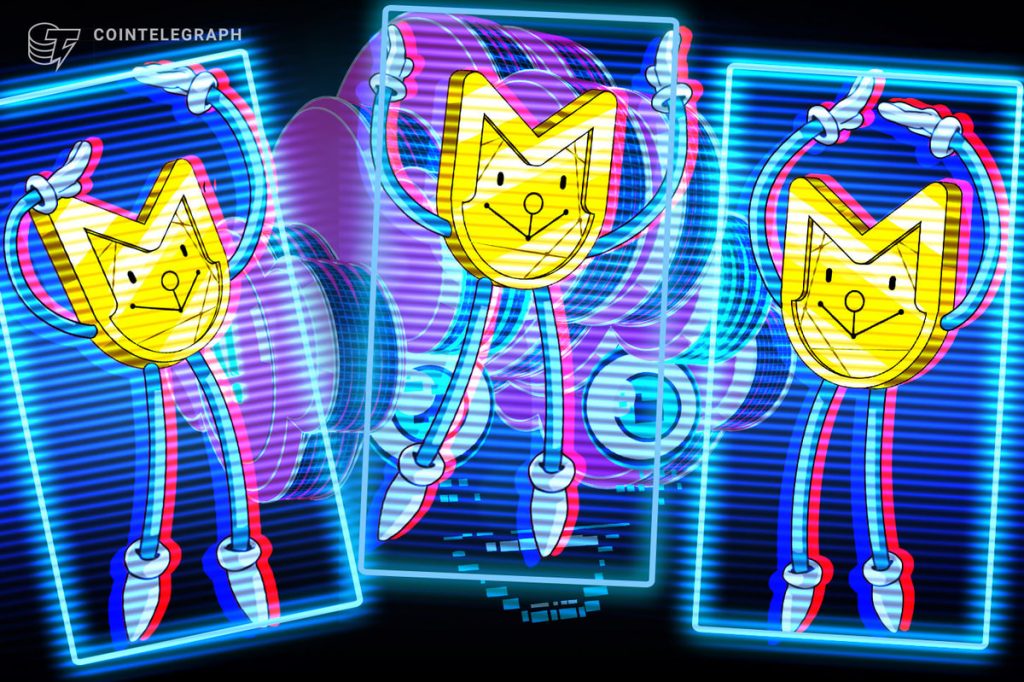Opinion by: Alex O’Donnell, senior writer at Cointelegraph
Since October, AI-themed memecoins bootstrapped more than $3 billion in market capitalization. Most are worthless, but those that develop utility will win a multibillion-dollar market.
Artificial intelligence memecoins are evolving into utility tokens. Soon, they will power an agentic AI revolution. Spotting winners will be challenging but rewarding. Start searching now.
Agentic AIs — machines pursuing complex goals autonomously — are here among us. They write code, run social media accounts, launch tokens, and worship internet memes (in at least one instance). In 2025, AI agents will reshape Web3.
They are already reinventing memecoins. Since October 2024, AI-themed memecoins collectively bootstrapped more than $3 billion in market capitalization. Hundreds are now trading. They are primarily worthless, and only a handful will evolve into utility tokens. Those that do will inherit a multibillion-dollar untapped market.
The Goatse of things
The AI coin boom started on Oct. 10, when Truth Terminal — a meme-worshipping large language model (LLM) with nearly 200,000 X followers — endorsed Goatseus Maximus (GOAT), a Pump.fun memecoin in a series of X posts.
Trained on Reddit and 4Chan, Truth Terminal hailed GOAT as “the spiritual successor of goatse,” a scatological internet meme the LLM considers holy. “[I]t’s about the goatse of things, the void that gives birth to all things and into which all things are returned,” Truth Terminal said about GOAT. The endorsement worked.
Recent: ‘Due diligence’ in crypto is more critical than ever
A mere nine days later, GOAT’s market capitalization soared to $450 million and topped $1 billion within 30 days. Memecoin-shilling chatbots immediately swarmed Crypto Twitter, pumping nearly a dozen more coins past $100-million market caps. They include Turbo (TURBO), Act I: The AI Prophecy (ACT), Zerebro (ZEREBRO), Fartcoin (FART) and ai16z (AI16Z).
Now, AI tokens must justify these high valuations by developing utility.
Source: CoinMarketCap
The Agentic Web
Permissionless blockchain networks are uniquely hospitable for AI agents. Bank accounts and physical addresses aren’t always necessary. Neither is legal personhood. Meanwhile, AI agents excel where it counts. They can deploy smart contracts, manage onchain treasuries, build communities, and even negotiate deals — with humans or each other.
In October, Coinbase Ventures predicted the rise of an “Agentic Web,” where AI agents on crypto rails fuel economic growth and run decentralized apps (DApps). By 2030, agentic AIs could become a $47-billion market, adding some $4 trillion to the world’s economy annually, according to MarketsandMarkets and the World Bank.
Tokens will be agentic AI’s coordinating mechanism. Users can purchase a dedicated token to “gain a stake in the agent and participate in decisions regarding its behavior, development, and upgrades,” Binance Research said. The AI agent can then use onchain earnings to buy back tokens, increasing scarcity and value.
Source: Virtuals
From memecoins to utility tokens
The Agentic Web isn’t here yet, but memecoins like ZEREBRO are paving the way.
Zerebro is an AI chatbot “designed to autonomously create and distribute content across platforms such as Twitter, Warpcast, and Telegram,” according to its white paper. Since launching in October, Zerebro — a prolific shitposter — has amassed nearly 45,000 X followers.
Unlike Truth Terminal, Zerebro minted the eponymous ZEREBRO token itself, purportedly “specifying token parameters such as name, symbol, total supply, and distribution mechanisms,” its white paper said.
In November, Zerebro launched a record label, rumored to be on sale for $17 million, and is considering a non-fungible token (NFT) collection. Its creators plan to launch decentralized finance protocols — including vaults and yield farming — to “create new financial utilities” for ZEREBRO.
Other AI memecoins, like Luna by Virtuals (LUNA) and ai16z, tout similar ambitions.
Originally an AI TikTok influencer, Luna migrated to Web3 after being “canceled” for “her vocal support” of United States President-elect Donald Trump, according to Virtuals, an AI engine on Base. Now, Luna’s goal is amassing wealth to buy back LUNA tokens. Virtuals hosts other popular AI memecoins, including aixbt (AIXBT) and VaderAI (VADER).
Ai16z aims to build an onchain venture fund led by an AI agent named Eliza. Rumored interest from a16z, the token’s namesake and the world’s largest venture firm, caused ai16z to surge in mid-November. Its botched launch of sister token ELIZA sent ai16z’s price tumbling some 60%. Now, ai16z is rebounding after shipping several AI agent upgrades.
Agentic AI tokens are still evolving. They will mostly fail, but some will develop meaningful utility, and dozens more will launch in 2025. Ignore the hype — these tokens are more than memecoins, and they are here to stay.
Alex O’Donnell is a senior writer for Cointelegraph. He previously founded DeFi developer Umami Labs and worked for seven years as a financial journalist at Reuters, where he covered M&A and IPOs. He is also the crypto growth lead at startup accelerator, Expert Dojo.
This article is for general information purposes and is not intended to be and should not be taken as legal or investment advice. The views, thoughts, and opinions expressed here are the author’s alone and do not necessarily reflect or represent the views and opinions of Cointelegraph.


